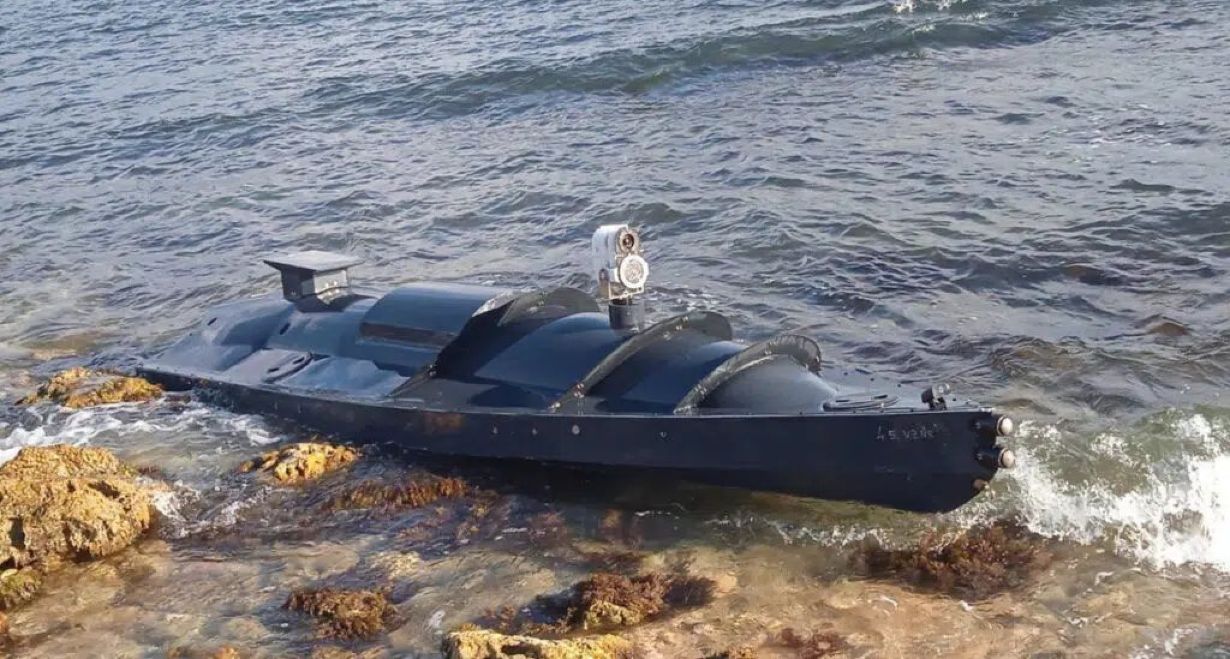Russian authorities in Crimea reported thwarting an unsuccessful Ukrainian naval drone attack on the Black Sea fleet in Sevastopol, saying they destroyed three unmanned surface vessels (USV), primarily by “small arms fire” from sailors.
Claims on both Ukrainian and Russian social media groups also did not report any casualties.
This is the second unmanned strike on the Russian navy fleet in Crimea after the massive USV and UAV attack in late October.
That engagement involved nine aerial and seven autonomous sea drones, all of which were subsequently destroyed.
Meanwhile, a separate report in The Economist claimed Ukraine possibly exploited Russia’s inability to jam the Starlink internet satellite constellation’s frequencies for the October attack. The report, however, went on to quote Ukrainian defense officials praising Russian electronic warfare, before which their drones have been somewhat helpless.
According to Crimea’s governor Mikhail Razvozhayev, neither were there any casualties nor were any ships destroyed, but the explosions broke the windows of nearby buildings.
This indicates the USVs must have been carrying heavy explosives aimed at destroying large objects like warships.
“In total, three objects have been destroyed, with small arms (and) air defense also working. The navy confidently and calmly repelled (the attack and the) situation was under control,” he was quoted in AFP.
Fresh Attack With New Drones?
Videos on Twitter showed grainy footage of an object, claimed to be a “marine drone,” burning in Sevastopol Bay, which Russia-friendly Telegram users in Crimea claimed was one of the Ukrainian USVs.
Whether the USV was the same make as the famous one used in the October Sevastopol attack – which Ukraine assembled with Western assistance in the middle of the war – is unclear. It cannot be ruled out that the same model must have been employed since videos then showed a large fleet of several dozen such USVs.
‼️Sevastopol
Russians report a coordinated air and sea attack with drones, which they claim to have repelled. Air defense was active
Sea traffic has been completely stoppedSomething is burning in the Sevastopol Bay, according to the Russians, a marine drone#Crimea #Ukraine https://t.co/XWMRViUBKX pic.twitter.com/vh01aLBPjZ
— PS01 (@PStyle0ne1) March 22, 2023
With only seven used for the October attack, Ukraine still has a huge inventory to keep using periodically. Naturally, Ukraine saw the Russian ability to thwart such attacks in October and knows it cannot expend the entire fleet all at once.
In the October strike, Russia had accused the US of orchestrating the attack by using its RQ-4B Global Hawk drone, which provided long-range reconnaissance, surveillance, and target coordination to the USVs.
Live flight tracking information showed the American UAV airborne South of Crimea in the Black Sea around the time the sea-borne attack was taking place.

Ukraine Used ‘Pro-Russia’ Elon Musk’s Starlink?
But besides the alleged use of the RQ-4B, The Economist claimed Ukraine used the Starlink satellite internet to guide the USVs for the October strike. Claiming that the Russians “struggle to jam certain frequencies” of the space-based internet, it said the Armed Forces of Ukraine (AFU) “made good use of this gap.”
Elon Musk’s company, however, then began blocking Starlink terminals from operating both over Russia and Ukraine by employing “geofencing.” The block also works over water, as the Starlink receiver placed on a boat sailing at speeds of over 100 km an hour will not function.
The report said Musk wished to prevent the “escalatory” ramifications of his company effectively becoming a participant in the war by supporting Russia’s adversary.
This has largely been consistent with Musk’s own previous comments about the war, which appeared to back the Russian narrative. He had come under fire for claiming that Crimea qualifies as a legitimate part of Russia following its 2014 referendum, suggested a peace plan where Ukraine compromises with Moscow, and hinted at possibly having to stop Starlink services in Ukraine since its cost was borne by the company.
Consensus on Russian Lead in Electronic Warfare
The Economist went on to quote Ukrainian defense industry insiders involved in the country’s drone manufacturing push, who praised Russian electronic warfare capabilities.
“The Russians are very, very good at what they do. They are performing black magic in electromagnetic defense. They can jam frequencies, spoof GPS, send a drone to the wrong altitude so that it simply drops out of the sky,” the unnamed defense industry source said.
The EurAsian Times had first reported in late June about the Russian expertise in electronic warfare and counter-drone systems that led to several Turkish TB-2 Bayraktar’s being shot down and AFU servicemen seeking to limit their usage. Russia had been building this expertise since its experience in Syria, the Donbas War, and the Crimean conflict of 2014.
Subsequent reports in Business Insider, Forbes, and Asia Times Online broadly confirmed this assessment. While some claimed how Russian EW accidentally even jammed their own communications and that Moscow was losing in other areas, they eventually claimed its EW reigned supreme.
It had a devastating impact on Ukrainian drones, as their UAVs were being either shot down or captured at an alarming rate.
- The author can be reached at satamp@gmail.com
- Follow EurAsian Times on Google News